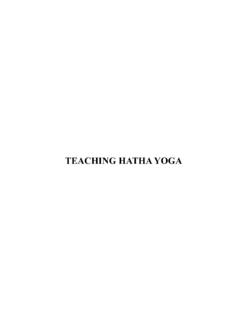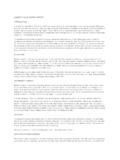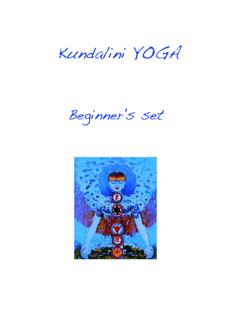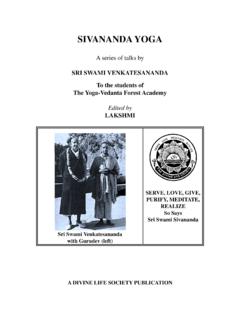Transcription of Get the ebook - YogaVidya.com / Yoga, Hatha …
1 Get the iTunesand many other storesAlso available in hardcover and paperback
2
3
4 From the In troduction TheHatha yoga PradipikaOur BooksBhagavad GitaGheranda SamhitaHatha yoga PradipikaKamasutraShiva SamhitaTheHatha yoga PradipikaThe Original SanskritSvatmaramaAn English TranslationBrian Dana important message to our readers:The asanas in this book should not be attempted without the supervision of an experienced teacher or prior experience.
5 Many of the other practices should not be attempted at all. The ideas expressed in this book should not be used to diagnose, prescribe, treat, cure, or prevent any disease, illness, or individual health problem. Consult your health care practitioner for individual health care. LLC shall not be liable for any direct, indirect, incidental, special, consequential, or punitive damages resulting from the use of this , PO Box 569, Woodstock NY 12498-0569 USAC opyright 2002 LLC. All rights and Read the Originals are trademarks of LLCF irst editionManufactured in the United States of AmericaPrinted on acid-free paperPublisher s Cataloging-in-Publication DataSvatmarama, Swami. The Hatha yoga Pradipika / the original Sanskrit [by] Svatmarama ; an English translation [by] Brian Dana Akers. Woodstock, NY : , 2002. xii, [116] p. : ill. ; 23 cm. Includes Sanskrit and 0-9716466-0-0 (hardcover)ISBN 0-9716466-1-9 (paperback)1.
6 yoga , Hatha . 2. Kundalini. I. Title. II. Akers, Brian Dana, 1958-, 436 dc21 2002100228 And would any of this have happened without Loretta?For Owen & VirginiaixContentsIntroduction ixAsanas 1 Pranayama 33 Mudras 52 Samadhi 84 Contributors 115viiixIntroductionOVER THE last half millennium, one book has established itself as the classic work on Hatha yoga the book you are holding in your hands. An Indian yogi named Svatmarama wrote the Hatha yoga Pradipika in the fifteenth century Next to nothing is known about him, although his name may provide a clue. It means one who delights in one s Atman, indicating the achievement of a state of bliss. Drawing on his own experience and older works now lost, he wrote this book for the student of yoga . He wrote this book for ve no doubt heard of Hatha yoga . The word pradipika comes from the Sanskrit verb + to flame forth and means a light, lamp, or lantern.
7 Its extended meaning, since one is throwing light on a subject, is an explanation or commentary. Therefore, the title means An Explanation of Hatha yoga . Even though I ve worked hard to make it understandable, this book, like yoga itself, will require some effort from you. It is chock-full of metaphors, synonyms, and analogies. (Perhaps it also contains a bit of hyperbole.) It is not a smooth, modern narrative, but rather an esoteric work, purposely oblique at times, from medieval India. Furthermore, I recommend that you learn Hatha yoga under the guidance of an experienced teacher, not solely from this book. Some practices in this book I don t recommend at all. x INTRODUCTIONINTRODUCTION xi(You ll know them when you read them.) This is nothing new. Looking at verses and , you can see there have long been different opinions on what should and shouldn t be book is divided into four chapters.
8 In chapter 1, Svatma-rama salutes his teachers, says why he is writing this book, who he is writing it for, where and how yoga should be practiced, describes fifteen asanas, and recommends dietary habits. In chapter 2, he establishes the connections between breath, mind, life, nadis, and prana, then describes the six karmans and the eight kumbhakas. In chapter 3, Svatmarama says what mudras are for, then describes the ten mudras. In chapter 4, he discusses samadhi, laya, nada, two mudras, and the four stages of Sanskrit original is complete and correct. I carefully examined four previous editions of the text word by word in fact, letter by letter to produce the best, most aesthetically pleasing version of the original Sanskrit ever published. I favored more sandhi over less, and took the liberty of simplifying and standard-izing the sentence that concludes each chapter.
9 Lines and verses were grouped the way they were translated, but the numbering was left unchanged. I utilized Arabic numerals and left the translation unnumbered to avoid clutter. While including the Sanskrit for the benefit of scholars, students, and posterity, its inclusion allowing easy comparison with the English is also a statement of confi-dence in the quality of the English translation is both accurate and accessible. To make it accurate, I stayed in the background and put myself at the service of the author and the text. I suppressed any urges to coin neologisms and employ fleeting usage, or to add my own comments and interpretations. The verse was made the unit of translation to stay off the slippery slope of paraphrase. Where the meaning is open to interpretation, I followed the tradition, specifically Brahmananda s Jyotsna commentary. Due to the ever-increasing x INTRODUCTIONINTRODUCTION xiknowledge of the reading public, more words were left untrans-lated than would have been a quarter century ago.
10 (You may want a dictionary of yoga handy.) Some previous translators inexplicably suffocated the book s wonderful parallel constructions; I allowed them to breathe. The translation is gender neutral where appro-priate, but many words in the original are gender even anatomi-cally specific, and were left that way. Finally, almost every word in the original made it into the translation. Few were left out, and very few new words were did many things to make the translation accessible. I tried to use international standard written English and produce prose that is clear, concise, and direct. To that end, I often broke a long Sanskrit sentence into shorter English ones, typically changed the word order from subject-object-verb to subject-verb-object, favored the active voice over the passive, added the necessary punctuation, and occasionally moved the latter part of a line or verse to the beginning for a better flow.










